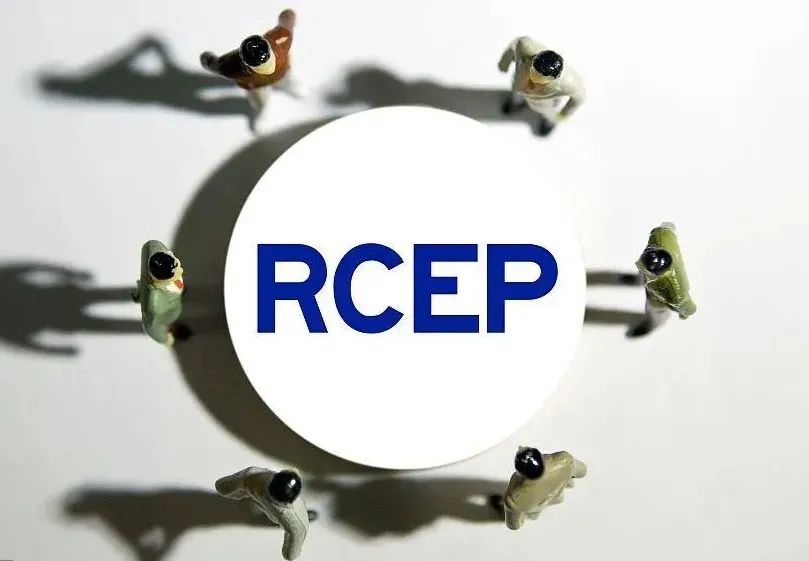【观点】陆洋|实现南亚与东南亚复苏的最佳选择:“一带一路”和RCEP(中英文)

“
南亚作为发展中地区,目前仍深受经济发展和民生发展问题的困扰。区域合作是帮助该地区摆脱贫困的途径之一。如果仅仅依靠南亚国家和现有的地区合作机制,则很难在区域合作进程中取得重大突破。“一带一路”和RCEP为南亚和东南亚国家提供了深化合作、共谋繁荣的良好契机。
本文作者系盘古智库高级研究员、清华大学一带一路战略研究院研究员陆洋,文章英文版来源于“环球时报”。
”

南亚作为发展中地区,目前仍深受经济发展和民生发展问题的困扰。区域合作是帮助该地区摆脱贫困的途径之一。
但是英国在南亚的统治以及印巴分治所造成的争端使得南亚各国的合作伙伴关系变得错综复杂。此外,印度不愿看到中国在南亚的影响力日益增强,因为就印度而言,南亚毋庸置疑是其传统势力范围,印度更希望打造自己主导的多边发展机制。
目前,在南亚区域合作进程中存在不同的多边合作机制,包括南亚区域合作联盟(SAARC),孟中印缅经济走廊(BCIM)和环孟加拉湾多领域经济技术合作倡议( BIMSTEC)。在新冠疫情冲击下,已经停摆许久的南盟似乎有所启动,例如提出设立新冠肺炎应急基金。但是由于印巴关系、中印边境冲突、印度与周边小国的关系等结构性限制因素,南亚地区合作前景仍然不容乐观。
总而言之,如果仅仅依靠南亚国家和现有的地区合作机制,则很难在区域合作进程中取得重大突破。
尽管新冠疫情对经济社会发展造成了巨大影响,但是区域全面经济伙伴关系协定(RCEP)的签署仍然给区域合作带来了希望,并且为东南亚经济的进一步发展注入了新动力。在美国退出多项多边协定的背景下,RCEP使该地区民众重拾对多边主义的信心。
RCEP的成功签署是东盟中等大国外交的胜利。东盟中的一些中小国家克服分歧,达成共识即:合作有利于区域发展。长期以来,人们一直认为东亚贸易协定能够为该地区带来更多利益,但是,该地区最大的两个经济体——中国和日本却因为在“政治上的不可接受性”而被排除在外。而2012年一个由东盟促成的协定的签署打破了这一僵局,该协定将印度、澳大利亚和新西兰纳入其中。如果东盟没有在谈判中发挥主导作用,RCEP可能永远无法启动。中国的经济腾飞也得益于多年来东亚和东南亚国家的外资投入,但是印度周边国家却无法对印度经济发展起到带动作用,因此这也是印度“东向”政策和“东向行动”政策背后的考虑因素之一。RCEP成员国也表示,虽然印度此次未能签署协议,但是RCEP未来的发展并不排除印度的加入。
基于南亚国家除印度以外,其他国家都在积极响应中国的“一带一路”倡议现实,南亚所有国家的“东向”政策也许是该地区未来的发展方向。
从中国的角度看,“一带一路”倡议和RCEP二者并不冲突。自RCEP签署以来,结合国内对于双循环新发展格局的讨论,中国正在积极探索 “一带一路”与RCEP的对接。在“一带一路”框架下,中国国内在加快自由贸易区的建设。到2020年为止国内自贸区的数量已达到21个,同时政府也希望各个自贸区能够根据RCEP协定要求做出调整从而扩大与成员国的贸易。总而言之,在南亚区域合作面临挑战的情况下,“一带一路”和RCEP为南亚和东南亚国家提供了深化合作、共谋繁荣的良好契机。
BRI, RCEP best solution for South Asia and Southeast Asia recovery
South Asia is a developing region struggling with economic and human development issues and strategies. One way to help pull them out of cycles of poverty is regional cooperation.
Unfortunately, such partnerships are complicated by disputes between India and Pakistan with roots from British rule and their partition. In addition, India is reluctant to embrace the influence of China in South Asia as it gradually expands. From Indian viewpoints, South Asia is undoubtedly its sphere of influence, which encourages New Delhi to build India-led multilateral development mechanisms.
Speaking of regional cooperation of South Asia, there are currently different multilateral cooperation mechanisms, including South Asia Association for Regional Cooperation (SAARC), Bangladesh-China-India-Myanmar Economic Corridor, and Bay of Bengal Initiative for Multi-Sectoral Technical and Economic Cooperation. The SAARC, which has been put on hold for a long time, seems to have been activated under COVID-19. For example, a SAARC coronavirus fund has been proposed. However, the prospects of regional cooperation in the region remain less optimistic due to structural constraints. These entail strained India-Pakistan relations, China-India border spats and India's troublesome ties with smaller countries around the subcontinent.
In one word, it will be very difficult to achieve better outcomes if South Asian countries rely solely on themselves and existing mechanisms.
Although the impact of COVID-19 has been dramatic, the signing of the Regional Comprehensive Economic Partnership (RCEP) has brought a lot of hope to regional cooperation and given fresh impetus for further economic development in Southeast Asia. People in the region have regained their confidence in multilateral cooperation against the background of US' retreat from multiple international agreements.
RCEP is a triumph of ASEAN's middle-power diplomacy. Certain small and medium-sized countries have overcome differences with a consensus that cooperation will do more good for the region. An East Asian trade agreement has long been recognized as something that would add major value to the region. However, China and Japan, the region's two largest economies, were not considered "politically acceptable" as architects for the project. This stalemate was resolved in 2012 by an ASEAN-brokered deal that included India, Australia and New Zealand as members. Without ASEAN taking up the helm for negotiations, RCEP might never have been launched. China's economic takeoff has benefited from foreign direct investment from East and Southeast Asia for many years. However, India cannot expect similar economic injections from its South Asian neighbors. This is also one of the considerations behind India's "Look East" and "Act East" policies. According to a statement issued by RCEP member states, India is still warmly welcome to join this agreement in the future, despite backing out this time.
Given that all South Asian countries are actively responding to the Belt and Road Initiative (BRI) except India, the "Act East" policy of South Asia may be a future option for this region.
From China's perspective, the BRI and RCEP do not exclude each other. Since the signing of RCEP, there have been heated discussions around dual "circulation" development patterns in China. Moreover, China has been actively exploring synergy between BRI and RCEP. China's domestic response to the BRI entails the rapid establishment of free trade zones (FTZs). In this year, the number of Chinese FTZs has reached 21. Beijing hopes these free trade zones can make necessary adjustments to expand trade with RECP members. In conclusion, under the circumstances that regional cooperation in South Asia is facing difficulties, BRI and RCEP provide such a great chance to accommodate regional cooperation in both South Asia and Southeast Asia.■
文章英文版来源于“环球时报”
图文编辑:徐仟慧
财经号声明: 本文由入驻中金在线财经号平台的作者撰写,观点仅代表作者本人,不代表中金在线立场。仅供读者参考,并不构成投资建议。投资者据此操作,风险自担。同时提醒网友提高风险意识,请勿私下汇款给自媒体作者,避免造成金钱损失,风险自负。如有文章和图片作品版权及其他问题,请联系本站。


